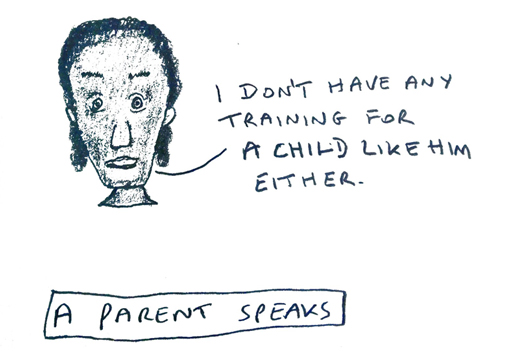2.1 Are teachers prepared for this?
Given the diverse context in which schools exist, it may seem unsurprising that many teachers say (and have said for a long time) that they do not feel well prepared for such a challenge, that they lack resources, time, skills or training (Scruggs & Mastropieri 1996; Rowan & Townend 2016) or that they generally feel under too much pressure in their role.
Activity 4: Are teachers prepared for this?
Read the extracts suggested below and consider the following questions:
- How does teacher training prepare them to work with a wide range of learners and families?
- How does workload impact upon their capacity to respond to diversity?
- What are their experiences of the ways others respond to these pressures?
- How does this influence your attitude towards planning for the involvement of all?
First read an extract from an Australian paper which explores new teachers’ preparedness for diversity and in particular students who would be identified as gifted.
Rowan, L. and Townend, G., (2016) ‘Early career teachers’ beliefs about their preparedness to teach: Implications for the professional development of teachers working with gifted and twice-exceptional students [Tip: hold Ctrl and click a link to open it in a new tab. (Hide tip)] ’, Cogent Education, 3(1), p. 1242458.
Read: from the section on Results (pp. 12–15) and the Sections 7–9, the Discussion, Notes and Conclusion (pp. 19–21)
Compare this formal report with these informal perspectives upon the reality of a teacher’s life, one from Scotland and one from India. As you read, consider what is said about the time available to work in ways that teachers recognise is the most effective.
Are Indian teachers burning out?
Scots teachers ‘at burnout’ with seven in 10 stressed ‘most or all’ of the time
When you have finished this task, you may want to have a discussion with friends or colleagues about the issues raised.
Optional reading: You might also want to look at an article that shows it is not like this everywhere! Here is one about how a move to work in East Africa made a teacher realise the stress she was under working in England. Secret Teacher: I moved to Africa – and realised how flawed British education is
Comment
It seems fairly clear that many teachers do not feel they are well prepared to deal with a wide range of learners and families. They also seem to feel that the pressure of workload limits their capacity to work ways which (they feel) require new knowledge. However, teaching is not just an intellectual exercise. It is also about interpersonal interactions, which are deeply tied up with our emotional responses. In 2006, a research report came out in the UK which had been commissioned by one of the main teacher unions, the National Union of Teachers (Macbeath, Galton, Steward, Macbeath, & Page, 2006). In this report the authors noted how the challenges of delivering the national curriculum to a diverse group, is inherently tied up with being able to control that class, but rather than admit this fear (which is understandable response given that they have to deal with the reality on a regular basis) they tend to blame external factors beyond their control for their current practice. They feel justified if they can focus the blame upon resources, space, time or training, rather than upon their sense of vulnerability.
But as was evident in the experiences of teachers, there are also a great many unspoken biases within the system. Many of these represent discriminatory views and practices of that people may be unaware of or which they do not examine. This does not require a malevolent act, but just an unquestioning one; perhaps accepting something or responding to something in a particular way because it is the majority view or the traditional way or ‘just how it is’. So, for example, unequal treatment can emerge through disrespectful and micro-aggressive responses on the basis of ethnicity and gender even with a highly respected and experienced teacher who in other circumstances is held up as an exemplar of good practice (Beaulieu, 2016). There are a great many reasons therefore why our behaviours may not always match up to our expressed beliefs.
The intention of the statistics and readings presented in this section is to demonstrate the complex landscape in which we must manage the relationships which are at the heart of successful inclusion. If we wish to lead change we cannot begin where people are not: we have to accept that many people feel they do not have the time, space and skills to start working in new ways. We have to begin with where people are.

